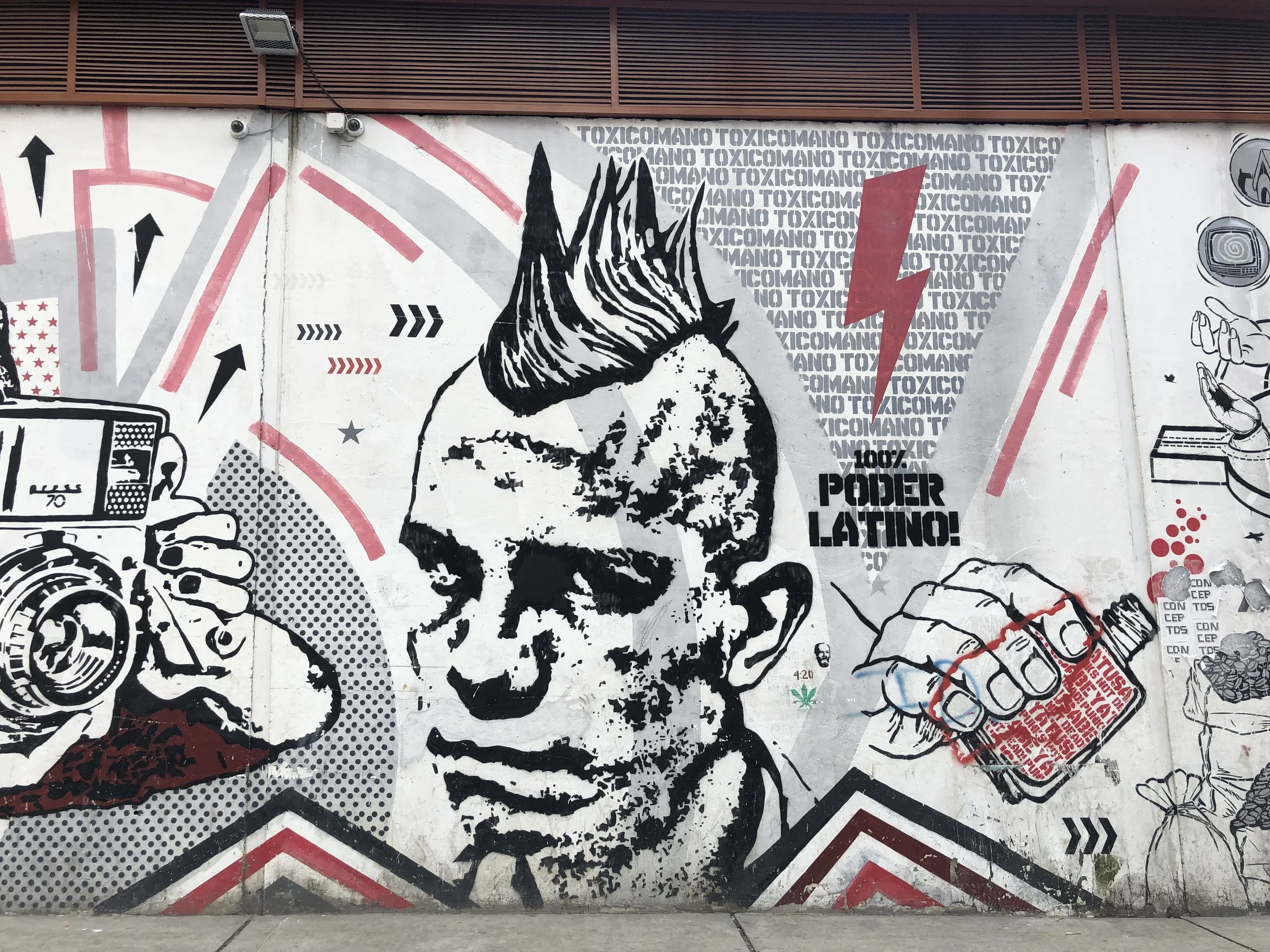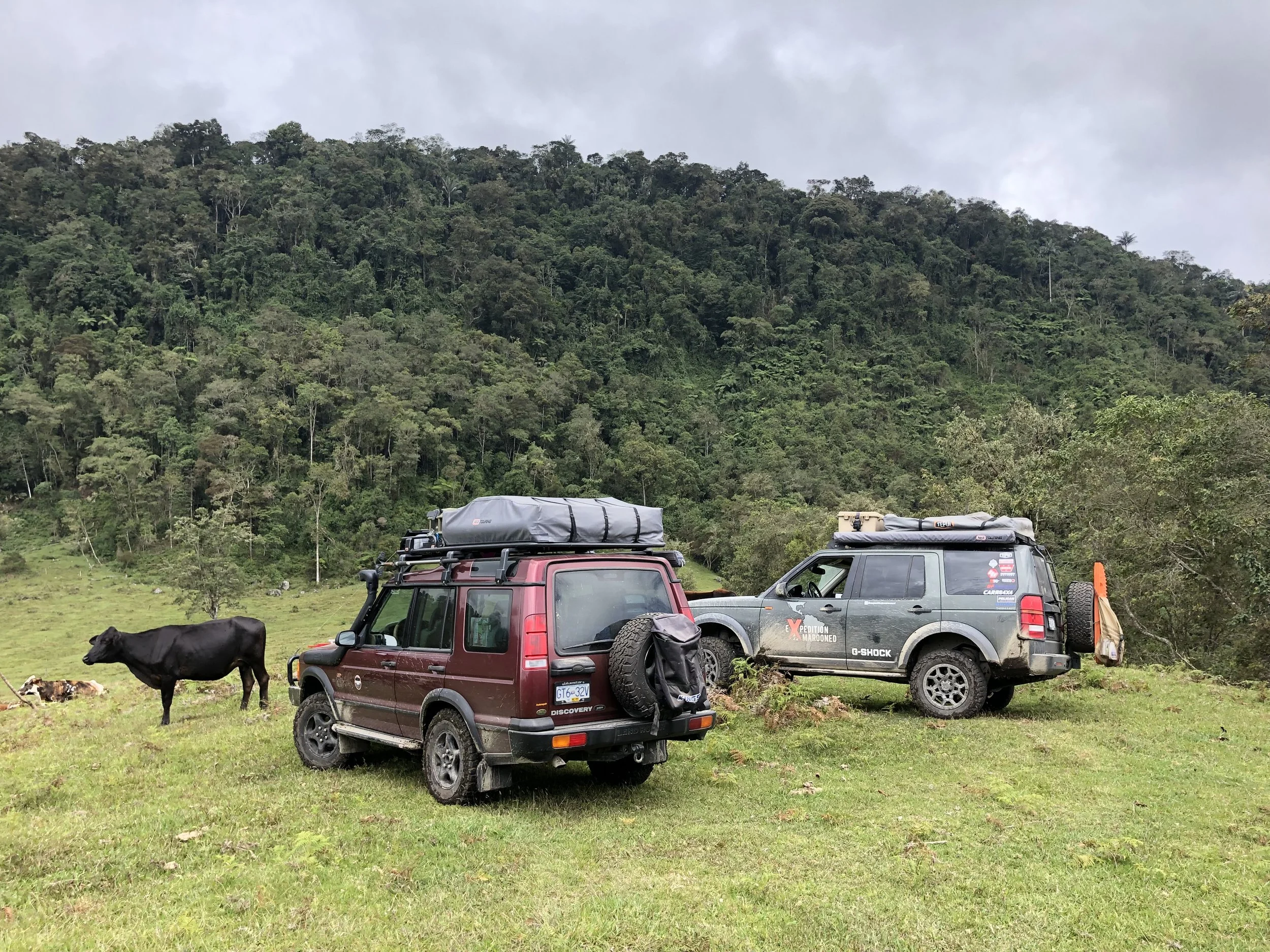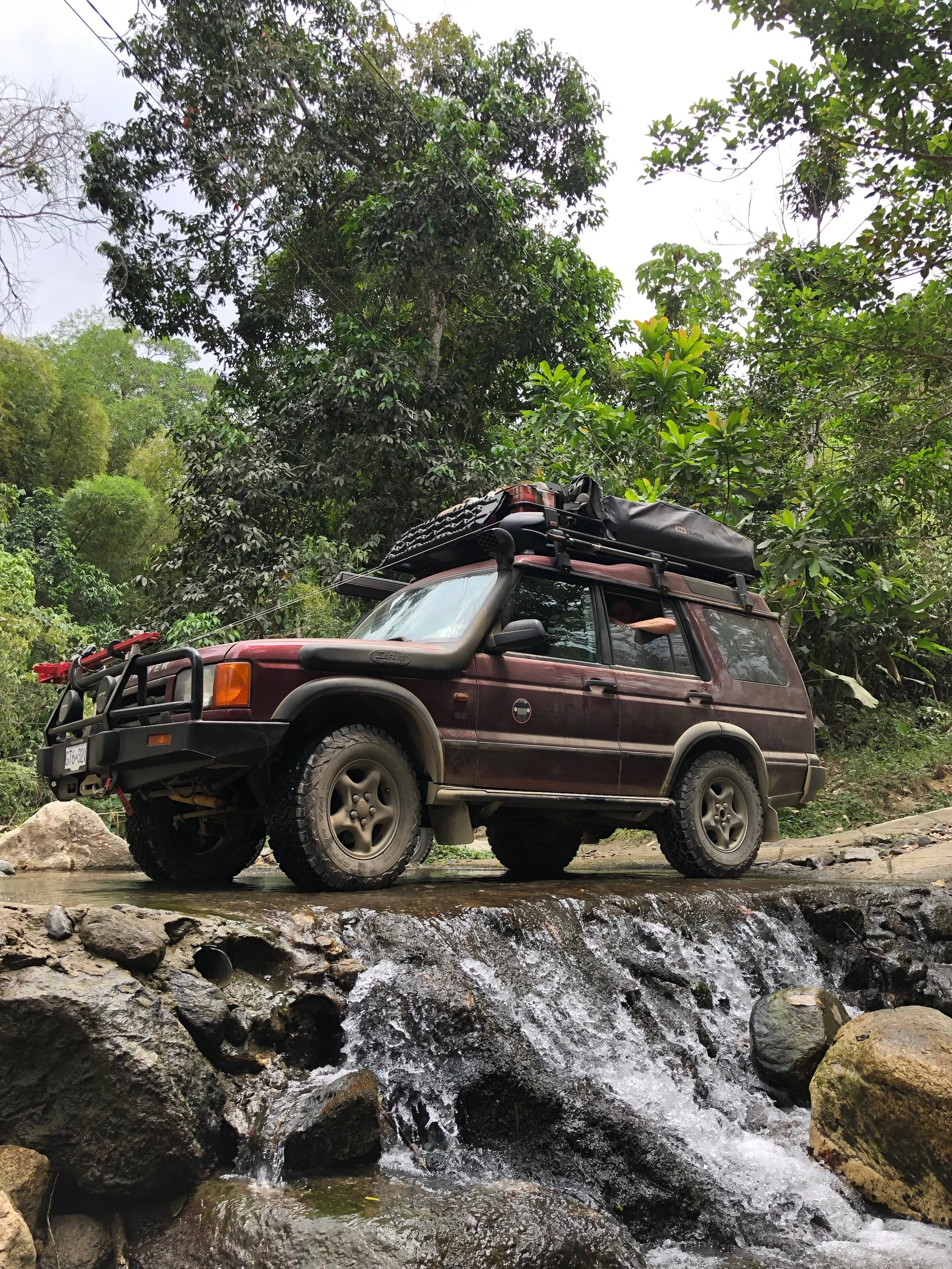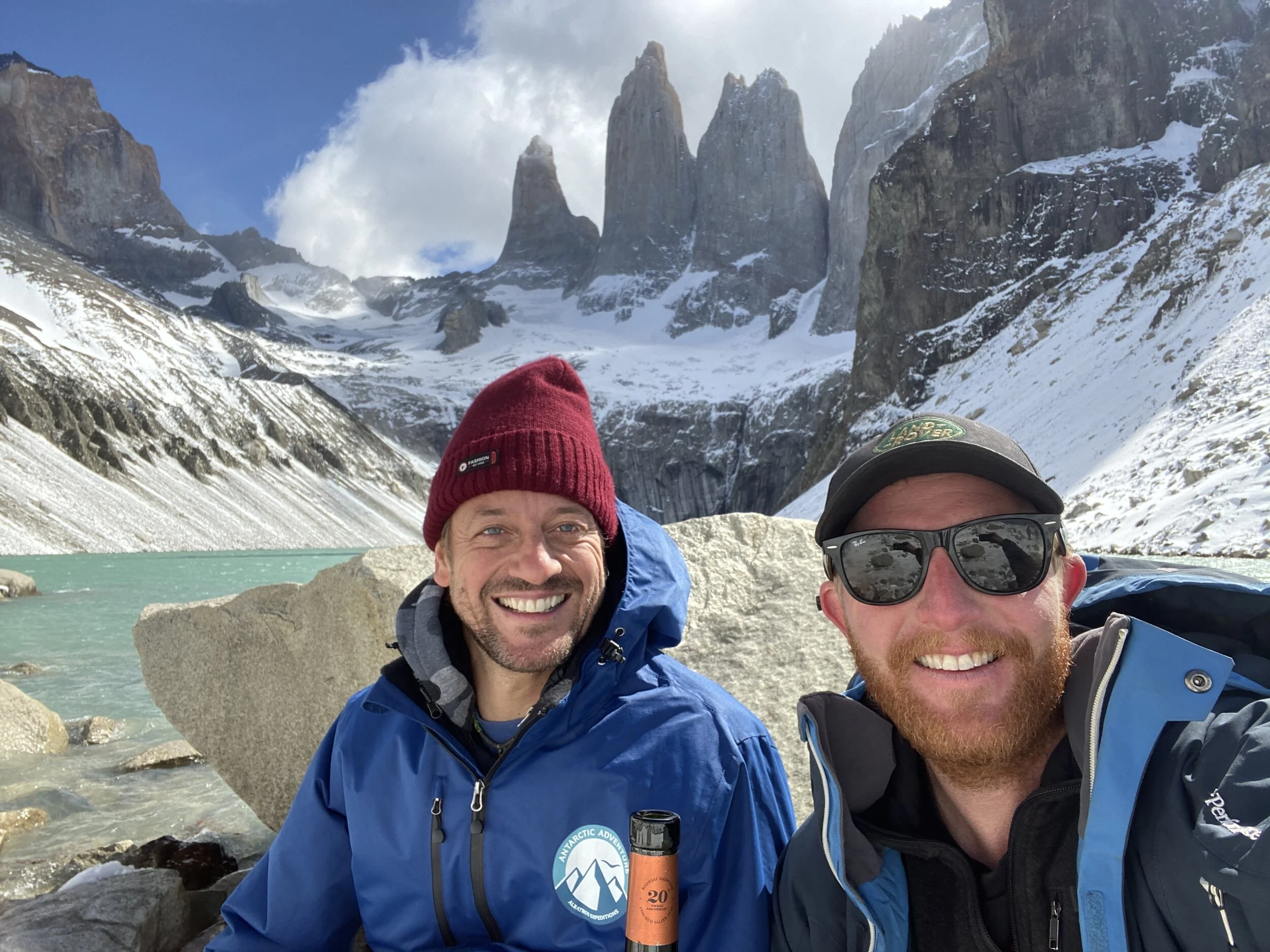Bogota
3rd April - 11th May
I arrived in Bogota with Josh and Jessie. We were supposed to stay two or three days. I ended up staying five weeks. There were two primary reasons for this. One of them was work - I had decided to significantly extend my trip which would mean deriving some income on the road so I set about putting that plan into action. The second one (perhaps unsurprisingly) is that I met a girl. As such, my time in Bogota was the closest I’ve had to ‘normal life’ since departing in on this adventure back in November last year (2018).
The first few days were as a tourist with my friends. Shortly after that, I checked into a reasonably priced hotel in the middle of Centro (right next to the old-town historic district of La Candelaria) and there I ‘lived’ for the following month. I slipped into a routine of working mornings (and afternoons / evenings as required), going on weekend road trips and the bulk of my time was otherwise spent with Paula, a Bogotana that I met in my first couple of days in the city.
I opted not to include photos of Paula because it's not necessary to tell this tale and also to respect the privacy of something that is between us.
Early days as a tourist:
As a city with a population of almost 11 million people, there is no limit to the amount one can explore. But as a tourist there with a short amount of time (as most people give Bogota), you’re pretty much on rails in terms what is advised as the logical first few days of tourist activities.
For our time as tourists, the hit list for Jessie, Josh and I were:
Taking the teleferico up to Montserrate and taking in the enormity of the city from the hill towering over the city’s eastern flank
The Gold Museum/ Museum de Oro: there’s a rich heritage of the indigenous cultures making many ornate pieces from gold. When the Spanish came to the region, one of their top priorities was liberating it from the people of Colombia. The gold museum tells this story and ended up being much more interesting than I had thought
A walking tour of the city: I’ve always enjoyed the ‘free walking tour’ concept (obviously you pay a tip) and is a great way to orient yourself in the city as well learn as much as possible in the shortest time possible about its history, current and historical political issues and things you must do while you’re here
Went to the Botero Museum: Botero is a famous Colombian artist and sculptor, know for the generous proportions of people in all his work (i.e. his art is about fat people)
Tried ‘chicha’, a local alcoholic drink fermented from corn
Went to the National Museum (Museo Nacional)
Graffiti tour of the city (I’ll cover this below)
The Botanical Gardens (Jardin Botanico de Bogota) … and had a little nap there
The flea markets (mercado de las pulgas)
The view of Bogota looking down from Montserrate
One of the pieces on display at the Gold Museum
Cute old couple near to Plaza Bolivar. They needed a little tip in order to let me take the photo but certainly worth the $1.00 I gave them and happy for them to have it
Trying ‘chicha’ - an alcoholic drink made from fermented corn
A Botero piece in the free museum of his works. While potentially speculation from our tour guides, I was told that he donated his collection to this museum as a bribe to reduce a prison sentence his son was facing
Panoramic view of Teatro Colon in La Candelaria
Jess, Josh and I playing around in the National Museum
Napping in the Botanical Gardens
Bogota’s Graffiti Scene:
A popular thing to do in Bogota is take a graffiti tour of the city. It supposedly has some of the world’s best graffiti artists and you can’t go anywhere in the city where there are blank walls – it would seem the whole city is a canvas for both the local and international street artists. I know very little on the subject but for me the powerful thing about the tour was having the subtle political messaging explained to me in the context of the broader political climate. I didn’t expect to learn nearly as much as I did about Colombia’s history on a graffiti tour but the political commentary in much of the art necessitates explanation (which is generally along the themes of corruption, ‘disappeared’ people, the drug war, guerillas and so forth).
At one point, I got to talking a homeless guy who evidently grew up in New York. For helping him out a little bit he even offered to paint my name on a wall near my first hostel.
Ok, so it’s not the most obvious but that is my name and I commissioned this bit of street art / vandalism
I helped this guy out a little so he promised to make it up to me by putting my name on a nearby wall
El Cocuy National Park:
After a week or so in Bogota, I was keen to get back in the car so we planned a trip to El Cocuy National Park which is located in the Andes Mountains on the east side of the country. It’s around nine hours from Bogota and the majority was easy driving. About two thirds of the way in, Google Maps decides that we should turn off the bitumen and we follow a river through a canyon for over an hour. The random drive down the canyon turned out to be one of my favourite times of the weekend … but it’s hard to see how the slow rocky road would have been faster than the paved alternative.
Arriving into the town at the base of the hike in the dark we find our hotel and search for food. We pass some local fast food in search of something better and find a bar / restaurant filled with Colombian cowboys. It was clear that I was the only gringo in town as the drunk cowboys watched me and then one or two drunkenly come up to me to fumble out some words in English welcoming me to the town. It’s these off-the-beaten-path experiences that makes travel so amazing.
Parked on the streets of Guican, sitting right below El Cocuy National Park
Following an off-road trail along a river towards El Cocuy
We arrived in Guican beneath the national park to find most of the town either at this football match or drunk in a handful of local bars
The main event in El Cocuy is doing one of the several hikes up to the glaciers at the top of the mountain. We choose the Devil’s Pulpit (Pulpito del Diablo) which is a 20km round trip (10km out and back). The hike ascends from 3,900m to 4,900m and down again. The first 6km are flat (somewhat downhill on the way out) and easy (less so finishing up on incline at the end of the day). The 6th to 8th km are uphill but on an easy trail. The 9th km is over rocks and boulders, the 10th km is on a large rocky surface out and back), ascent from 3,900m to 4,900m and down again. It’s far from an easy day’s hike but seeing the different climate zones as you ascend is pretty special.
Eventually you reach the top and it’s worth the pain. It’s amazing to see a glacier given how I’ve spent the last several months in stinking hot tropical heat. I’d had a stretch not wearing shoes for two months (thongs / flip flops the entire time) to being in a ski jacket, gloves, face mask and hat.
Fresh legs as we start the 20km hike towards the Devil’s Pulpit
We went through three distinct climates as we hiked up and eventually there was no vegetation near to the top where the elevation was close to 5,000m
At the glaciers edge
Starting the slippery hike down
The incredible view from our cabaña on the morning after the hike: It was freezing cold and the altitude gave me severe headache so while it was a stunning view and the friendly owners fed us tasty traditional food, I was itching to leave this place
On the way back, we took the opportunity to explore the Boyaca region and passed through many towns including Duitama, Tunja, Nobsa, Sogamoso and Zipaquira. Nobsa was a beautiful example of a typical small Colombian town and after that passed by Pueblito Boyacense – a strange village that had all of Colombia’s architecture represented in a 500m x 500m ‘town’ they’d created to represent the diversity of Colombia and sell food and showcase the architecture from the different regions. And finally just before re-entering the sprawling enormity of Bogota, we stopped at the Catedral de Sal (Salt Cathedral) which was once a salt mine converted into a series of churches.
Town square of Nobsa in the Boyaca region
Pueblito Boyacense in Boyaca which was built to showcase the cultural and architectural diversity of Colombia
Pueblito Boyacense dog
Catedral de Sal (Salt Cathedral)
One of the chapels in the Salt Cathedral. Maybe a little overrated if I’m being totally honest but then religion isn’t really my thing
Salento, Valle de Cocora & Armenia:
For the second trip from Bogota, we headed west to Salento. I’d heard great things about Salento but when we arrived it was over run by tourists and parking was impossible (admittedly we went during Semana Santa which is the big Latin Easter holiday which explains the mess). We checked it out and then stayed at a ‘finca’ (hotel / hostel on a farm) which was peaceful and a relaxing change from the big city Bogota pace.
The following days were spent meandering around the area. First stop Valle de Cocora which is where the world’s largest wax palms grow across the rolling green hillsides outside of Salento. It was crowded with tourists but worth a look and I had one of my favourite Colombian dishes to date – trucha gratinada, which is basically a whole cooked trout covered in cheese. The next day was Parque del Café, a bizarre amusement park that had ties to the coffee region but mostly consisted of fairly typical amusement park rides.
Valle de Cocora
Looking out over the world’s tallest palm trees
You wouldn’t catch me climbing up there to get a coconut down. In fact, I can’t even see high enough to tell if they are bearing coconuts. Fact: not all palm trees have coconuts but all coconuts come from palm trees
Apparently this place is kinda a big deal to people from the region. An amusement park but with a coffee plantation theme
Flume ride at Parque del Cafe
We encountered a series of bad luck after that when my tire was punctured by a piece of my roof rack and then on the way back to Bogota. In the process of fixing it, I realised my rock sliders would take the weight of car using the hi-lift jack, nor would my rear bumper so I used my compressor to air up and get to a tire place. The guy did a great job fixing the tire using homemade tools (like an iron attached to some electrical wires he used to fuse the rubber patch to the tire). The tire troubles were exacerbated when we realised the winding road back to Bogota was closed due to a rockslide and we had to re-route via Manizales, a trip that took us nine hours to get home rather than the expected six.
Getting some air in the tires to limp to the tire repair shop
It’s sometimes a drama at the time but I truly enjoy hanging out a workshops getting things fixed. If I had the option to have no mechanical problems on this trip whatsoever or the many that I’ve had, I’d probably still take the problems because of the fun of sorting out the situations and the people you meet to help you along the way … maybe that’s why I drive a Land Rover
Lake Guatavita:
The third of the road trips was to a little lake in the Cundinamarca region called Lake Guatavita. It’s got a fascinating history and an association with the El Dorado legend (a Spanish fascination with gold produced by the indigenous people of the region). It was thought the Muisca people of the area had been conducting ceremonies for centuries which involved throwing gold into the lake as an offering. The Spanish went to great lengths to try to retrieve the gold, including dynamiting the side of mountain apart and creating chain gangs with buckets to drain the lake in attempts to pillage the gold at the bottom. None were overly successful.
Lake Guatavita
The Spanish thought this lake was full of gold so they tried everything they could think of to get at it. But they weren’t particularly successful
A giant store dedicated to ice cream and deserts
Life in Bogota:
Besides several road trips, life in Bogota was simple and much like life at home albeit with a little bit more spare time to explore. I worked, ate out, got the car serviced and order some more parts, went to the theatre and so forth. Some highlights from my time there:
Eating at Leo: Recently recognised as one of the top 50 restaurants in the world. They served an incredible selection of different animals, plants and bugs sourced from Colombia as ingredients in their menu. This was a special celebration dinner for Paula’s graduation from law school
Otherwise, trying a huge number of the local restaurants and finally having access to different cuisines that come with big cities like Bogota. In the previous six months, the choices of food were largely local cuisine and local interpretations of Western dishes
Hanging out with various friends I had there. It wasn’t a long list but I did happen to know a few people in Bogota including a close friend of my sister from the US (Violeta), a Scottish guy I met in a Cartagena nightclub (Danny) and the occasional traveler that I’d met on my travels (Gabe)
Celebrating my birthday with a small group of my Colombian friends at an English pub
Seeing Carmen the ballet at Teatro Colon in La Candelaria. Admittedly I thought we were going to the opera which I enjoy much more than ballet but the theatre itself was worth the visit
The best second-hand bookstore I’ve ever been to. Literally a huge house converted into endless rooms filled floor to ceiling with old books in Spanish, English and other languages. I picked up a Spanish copy of my favourite book The Old Man and the Sea
Renting electric rental scooters around the city that you book through Rappi, a Latin ‘Uber Eats’ style app that has grown enormously in scale through South America.
Dinner at Leo
We ate each and every one of these ingredients across the ~12 courses of the meal including capybara, cayman, ants and caterpillars
Carmen at Teatro Colon
In a rush to buy the tickets and not bothering to translate the description, I bought tickets to a ballet when I thought I was buying tickets to an opera
Violeta from Seattle (a friend of my sister) and I at a weird and wonderful restaurant called Jugueteria. The entire place was lined with dolls and toys literally from floor to ceiling
The Libros Merlin second-hand bookstore in downtown Bogota
Bogotanos playing chess in one of the main pedestrian malls
And of course, I couldn’t waste an opportunity in a big city for this long without some work on the car. Bogota has an incredibly large suburb (Siete de Agosto I believe) which seems to be endless workshops and parts stores. I was referred to Klaus Herget who did some regular servicing and fixes while I worked with a parts importer to pick up some spares and do some minor improvements.
Klauss Herget helped look after my car to get some routine maintenance and minor fixes done while I was there. Ostensibly one of my many reasons to justify the extended stay in Bogota. I hope to maybe cross paths with Klauss as we both cross Africa in our Land Rovers in the coming year
It’s nice shopping when you can get what you need … and what you don’t
Work on the road:
It was in Bogota that I made a real effort in my quest for financial equilibrium on the road - balancing my expenditure with my income so my journey is not forcefully brought prematurely to an end. I used the time there to catch up on some neglected work from my businesses back home but also to try to work towards getting paid again so that I wasn’t running down savings.
My expenses on the road are approximately 15% of my living costs are back in Australia (if I’m smart with money here). Say I worked 50 hours a week back home, to work 15% of that is 7.5 hours and not an unreasonable time commitment out of my weekly travel schedule (assuming equivalent wage and ability to work remote). Obviously, there are challenges with time zones and internet dead zones where I’m away from the grid for periods but these can be compensated for and balanced out. It seems a reasonable target and a worthy sacrifice to secure my adventure with no defined end point.
Combine this approach with scrapping together small amounts of passive income and the problem is easier still.
Funnily enough, as I think about solving this problem, it seems so much easier than solving the one about how I return to Australia. I would need a decent amount of savings just to return to my old life. For example, I couldn’t even afford to move into my old apartment without starting a job immediately. So now, ironically, my question has gone from ‘how long can I stay on the road?’ to ‘how can afford to return to Australia when it’s time?’.
While I haven’t completed solved for this problem, the maths is relatively simple and my goal is clear.
Not actually Bogota. This is me preparing for a board meeting a couple months prior overlooking Lake Peten Iza in Guatemala
Eventually I had to leave Bogota of course. In the end, the excuse I had was to intercept another overlanding crew and carry on south with them. I ‘met’ some fellow Land Rover enthusiasts on Instagram headed on broadly the same trip as me. Andy and Mary of Expedition Marooned were heading from California towards Argentina and gaining ground on me so when they were within a days drive, I reached out to see if they wanted to hit some trails together. I announced I was leaving, waived a sad goodbye and drove all the next day to meet them in Salento. I’m thankful I did - we got on really well, had some amazing adventures together through Colombia and Ecuador I’m certain our will cross paths again!





















































